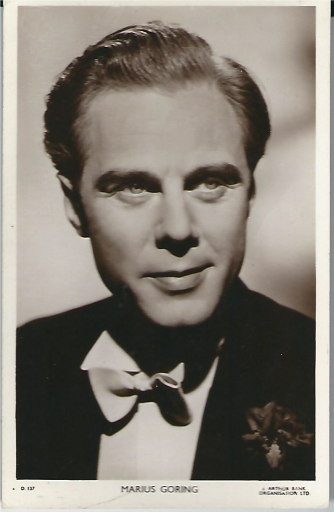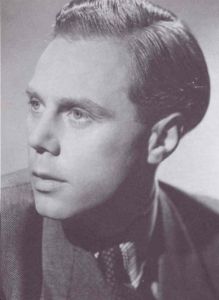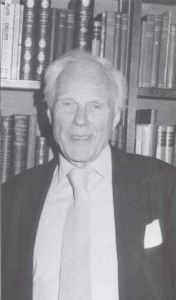An interesting actor to say the least.
I remember him well as Mr Perrin in ‘Mr Perrin and Mr Traill’ and also in ‘A Matter of Life and Death’ which when his character was down on earth was photographed in that dazzling Technicolor of the time.
See Below – Marius Goring and David Niven.
Because of his suave, continental looks, Goring was often assumed to be foreign, but was born in Newport, Isle of Wight, in 1912. His father was a doctor and criminologist who died the 1918 flu epidemic, when Marius was six; his mother, the former Katie MacDonald, was a pianist who had studied with Clara Schumann. Educated at Cambridge and at the universities of Frankfurt, Munich, Vienna and Paris, Goring determined on a stage career while in his early teens – he first appeared on stage in a Cambridge production at 13 – and studied under Harcourt Williams and at the Old Vic dramatic school from 1929 to 1932.
He made his professional debut in 1927, and toured the continent playing classical roles – he was fluent in both French and German. In 1932 he joined the Old Vic, stage-managing two seasons and playing both Romeo and Macbeth among other roles in 1932-34. He made his film debut in Thornton Freeland’s The Amateur Gentleman (1935), the screenplay of which was co- written by Clemence Dane, and the following year Goring had a great personal success in the West End production of Dane’s play The Happy Hypocrite with a performance Michael Powell was later to describe as “stunning”.
While at Cambridge Goring acted in plays, as he did while studying at two German universities and at the Sorbonne. He returned to England as an apprentice at the Old Vic. When the actor scheduled to play “Macbeth” broke his ankle and the understudy, who was Alastair Sim, lost his voice, Marius acted the leading role for three performances at age twenty.
He was seen in Rembrandt (1936), The Spy in Black (1939), and Pastor Hall (1940) with Nova Pilbeam before making his reputation with English movie audiences in The Case of the Frightened Lady (1940), which had been a hit for him on stage.
Despite the success he had achieved at a relatively early age and the high expectations his colleagues had for him, Marius Goring was devastated when impresario Binky Beaumont replaced him during tryouts of a play that starred Diana Wynyard. “I got the sack while we were playing in Manchester,” he remembers. “I came very close to jumping out of my hotel window. When I got back to London Larry Olivier asked if I’d like to take over for him in a part he was tiring of. Like an idiot, I refused, thinking my career was over. To a serious young actor, one’s career is one’s life.”
His proficiency in “high German” was put to good use as a member of British Intelligence playing Adolf Hitler on a popular radio series heard throughout the British Isles.
Even after the international acclaim he received for his work in the picture The Red Shoes (1948), he continued to consider himself essentially as a stage actor. The exceptionally versatile actor has since then appeared in Take My Life (1947) with Greta Gynt, Mr. Perrin and Mr. Traill (1948) with David Farrar, Pandora and the Flying Dutchman (1951), The Magic Box (1951), The Barefoot Contessa (1954), Son of Robin Hood (1958) with Jack Lambert, The Treasure of San Teresa (1959) with Dawn Addams, Exodus (1960), First Love (1970), Holocaust (1977), and La Petite Fille en Velours Bleu (1978).
|
In 1941 he married Lucie Mannheim, the German-born actress who was seen in The Thirty-Nine Steps (1935), So Little Time (1953), and Bunny Lake Is Missing (1965). Marius considers their appearances on stage together, playing in both English and German, to be the high points of his career. She died in 1976.
Goring met his present wife, producer Prudence FitzGerald, when she chose him from his photo in a casting directory for a part on a television show. They share a seventeenth-century house in London’s Hampton Court that looks out onto a royal park.
He is seen frequently on British television and works almost constantly on the stage in England. The Winslow Boy, starring Marius Goring, was very well received throughout the tour of the United Kingdom in 1984. But his recent work is almost unknown in the United States, where he never became the name that he is in the United Kingdom. He played Germans so frequently and convincingly, many American moviegoers were confused as to his nationality. Since he has made only a few Broadway appearances and has never made a picture in Hollywood, he has not had the personal publicity a foreign character actor of his standing would receive in the American press.




He is very good in 1968/1976 tv series The Expert
which I have a lot of episodes of.